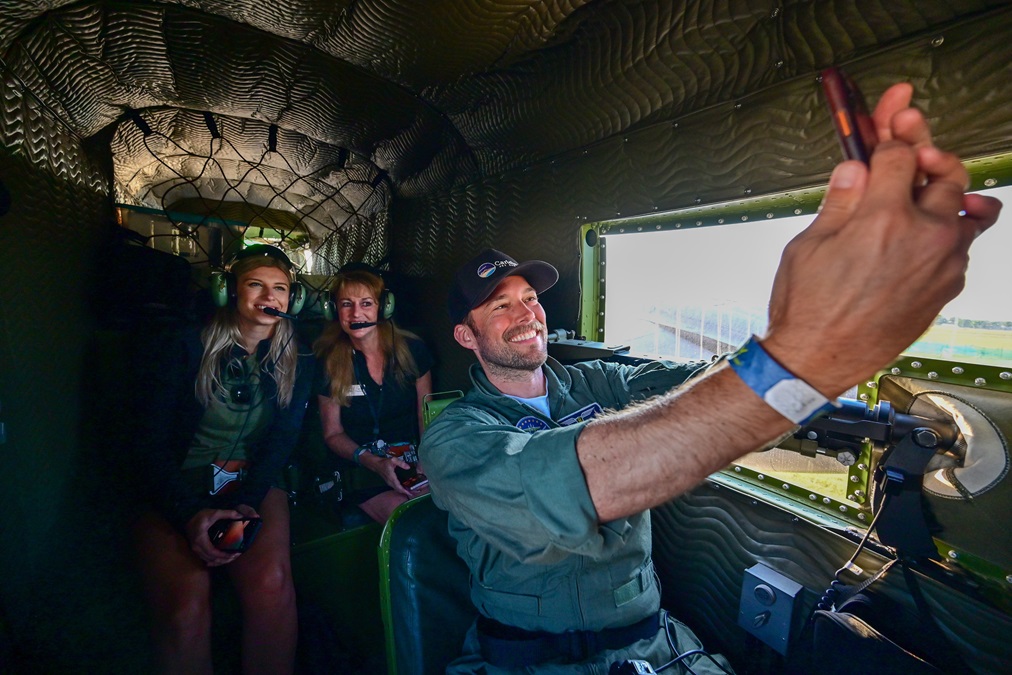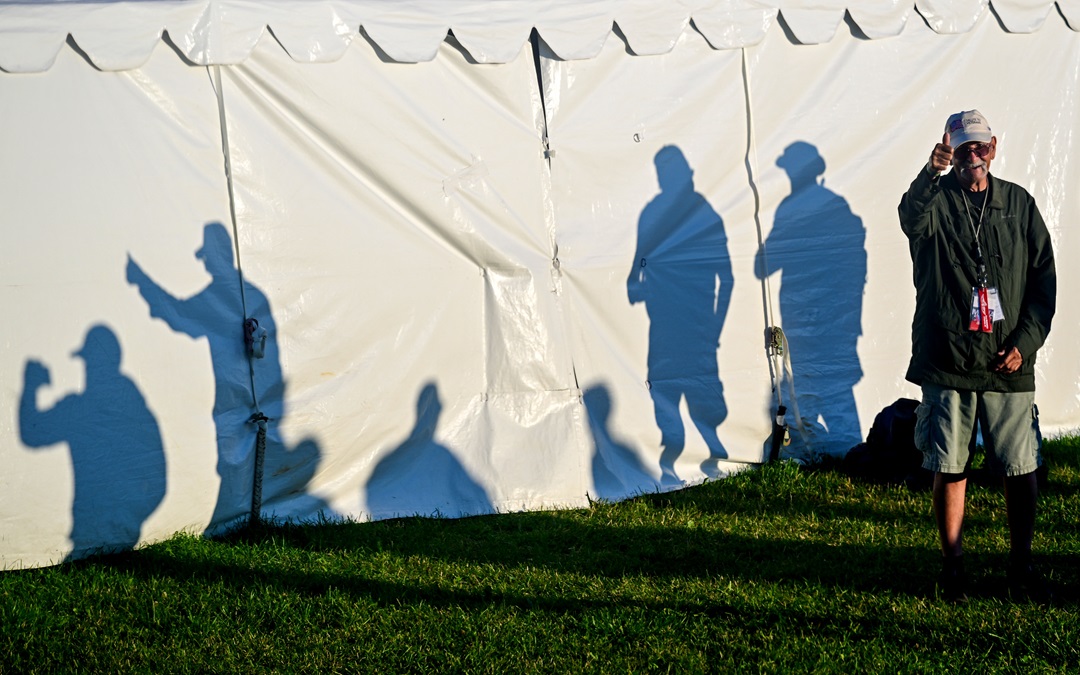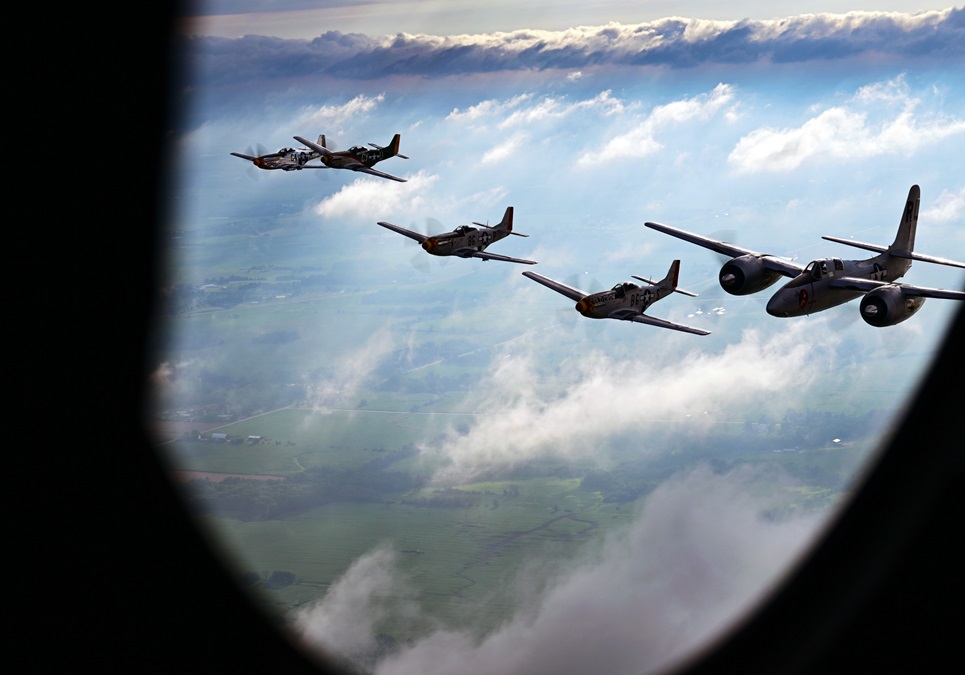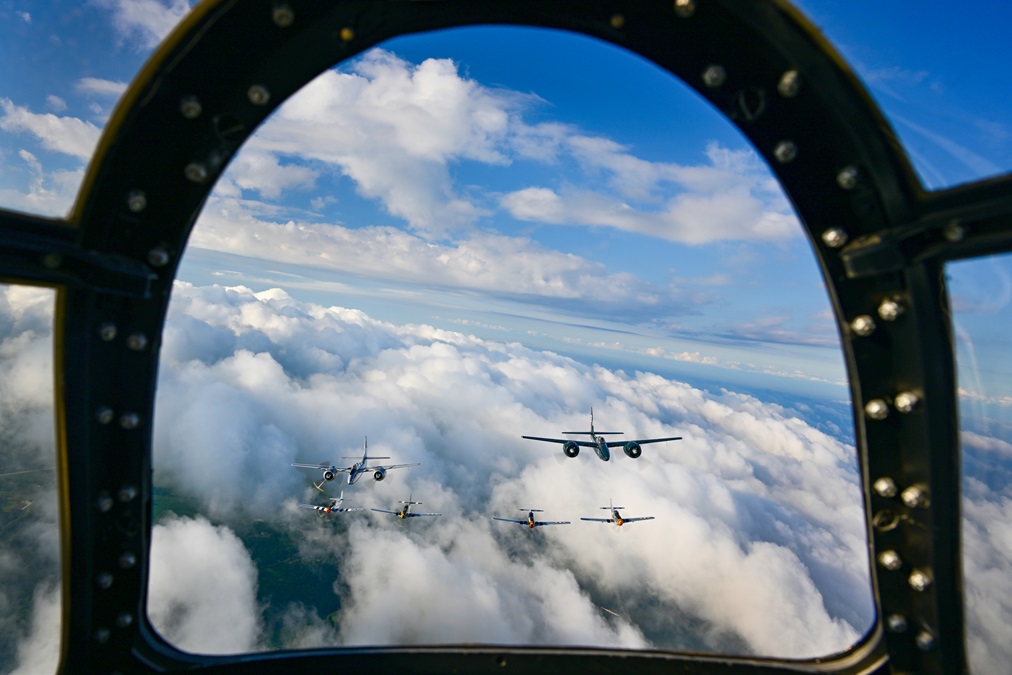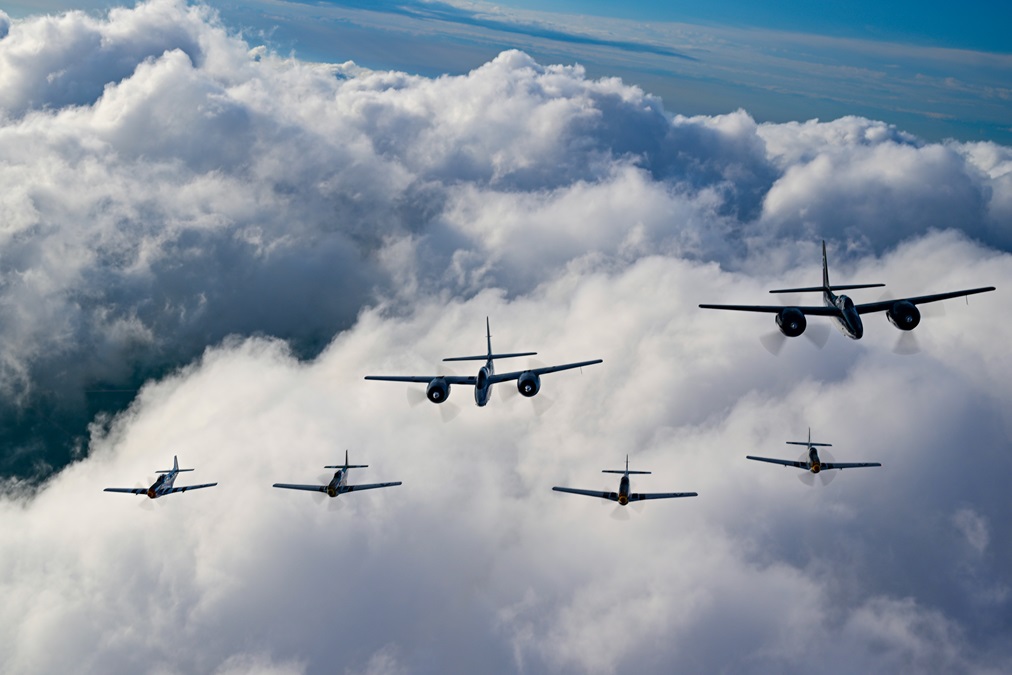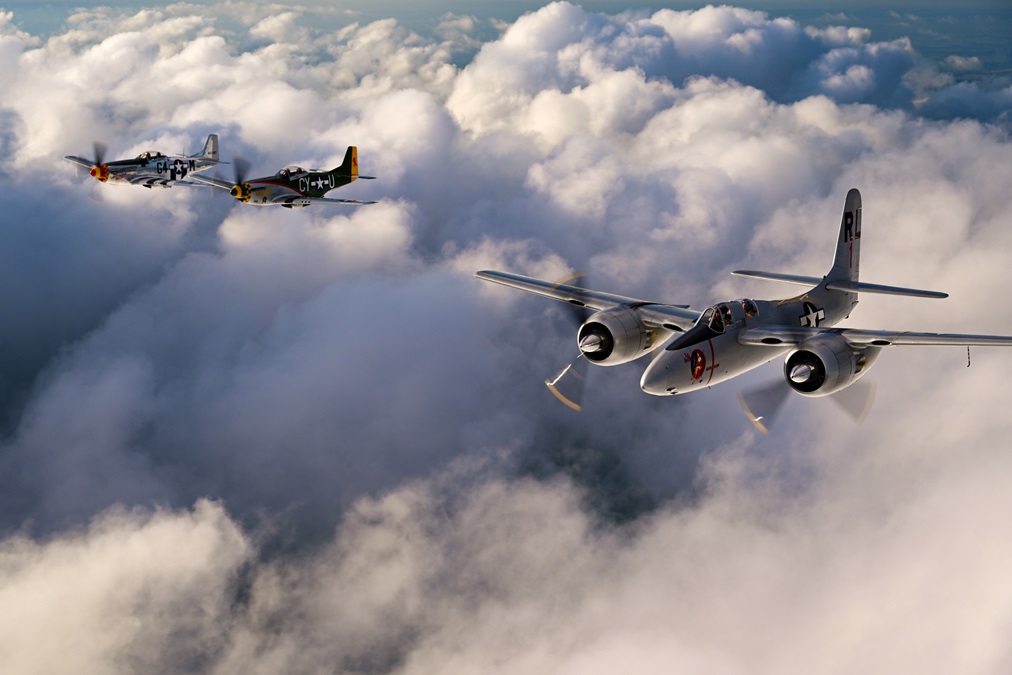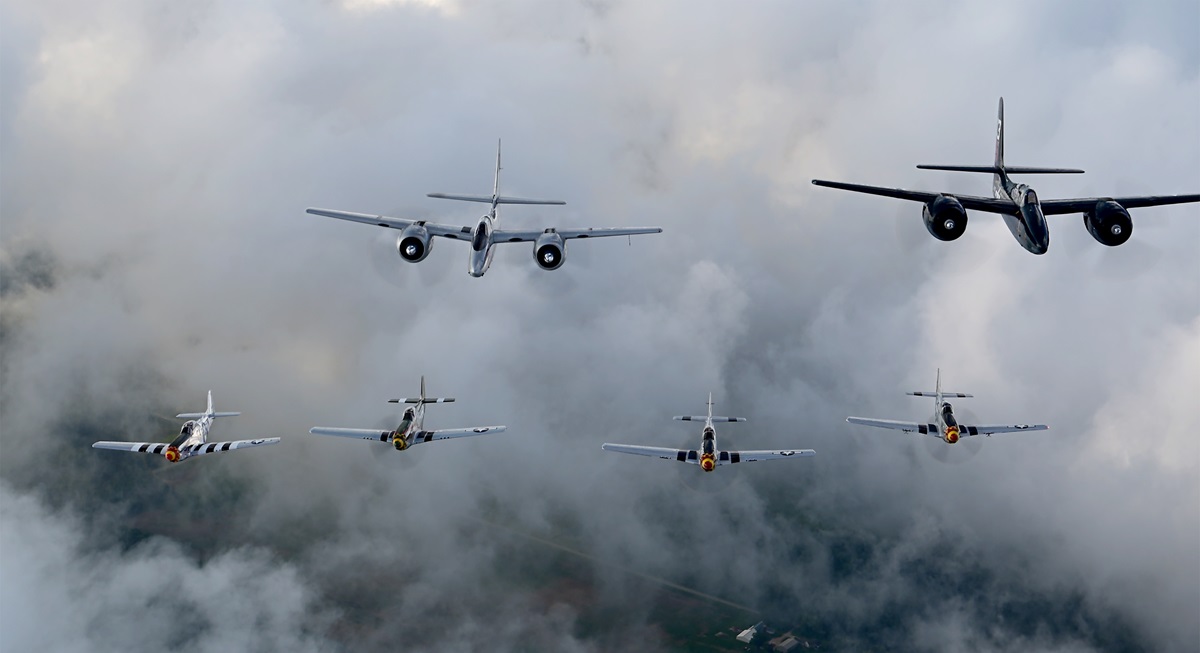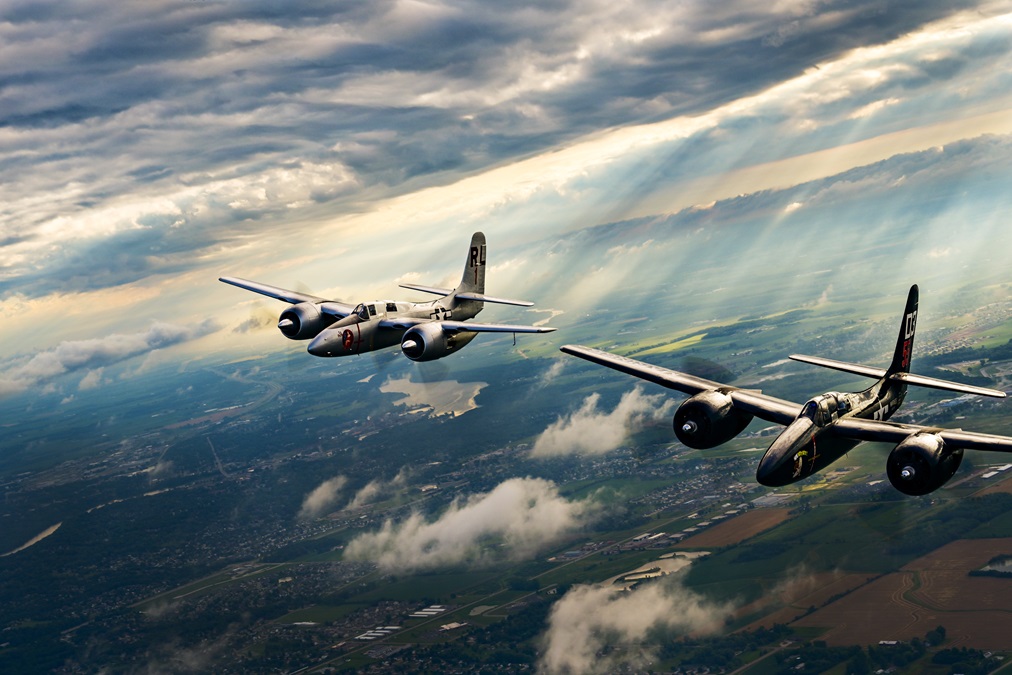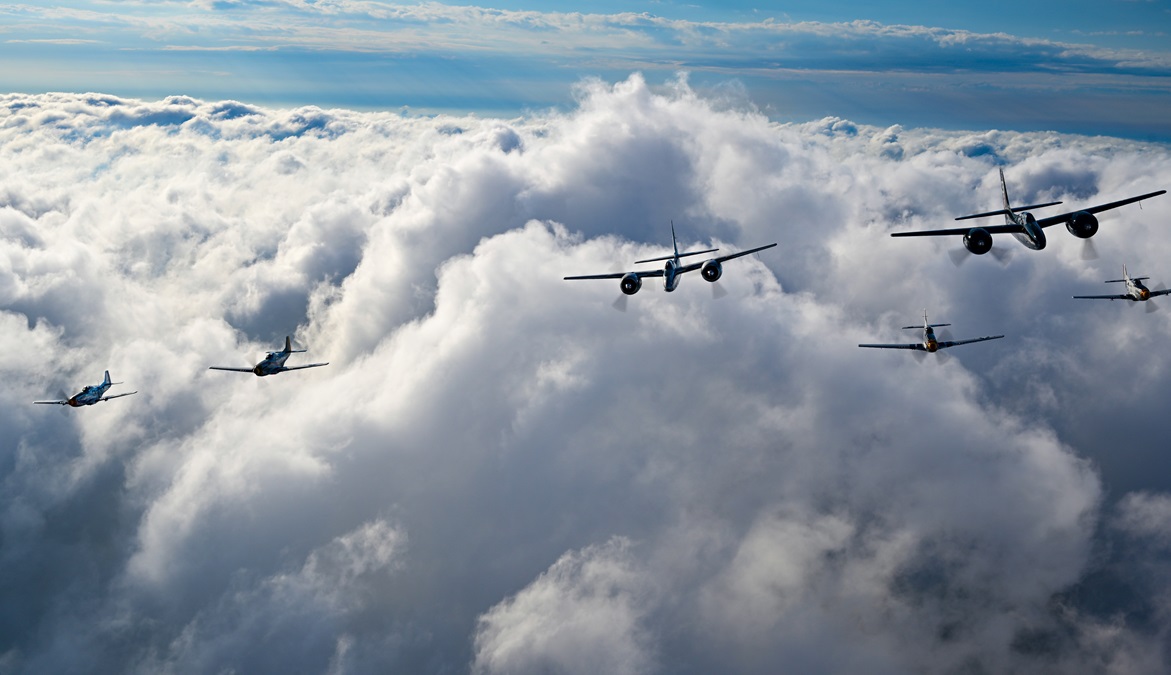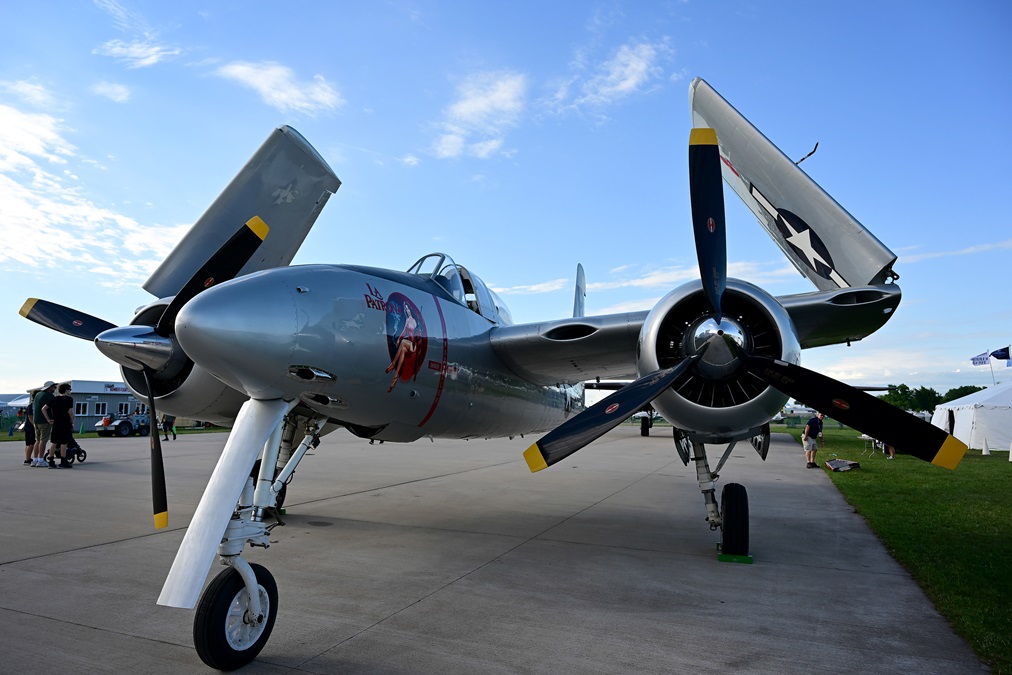AirVenture awakened by warbird thunder
Sunrise sortie a living history tribute
Two Grumman 7F7 Tigercat escorts sprang alive with smoke billowing from their twin Pratt & Whitney radial engines as we launched in a twin-engine, twin-tail North American B–25 Mitchell bomber, its silhouette casting distinctive shadows over EAA AirVenture Oshkosh in Wisconsin during a sunrise sortie from Warbird Alley.
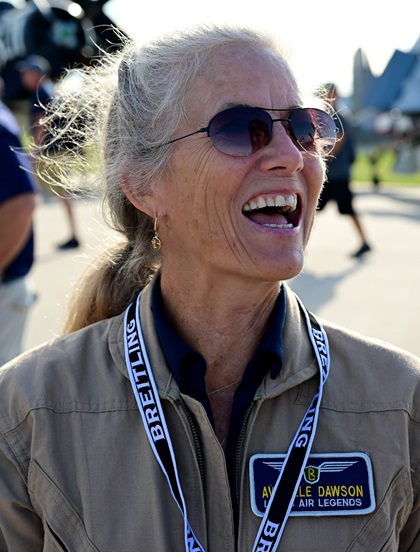
The rising sun bathed a pair of red-nosed North American P–51 Mustangs and a blue Tigercat in yellow as they sidled up to the left flank of the bomber renamed Ukraine Ta Get Ya, while clouds and pastel sunlight framed a silver Tigercat and two more Mustangs flying in close formation on the right.
Nearly 10,000 B–25s were produced from 1939 through 1945, but only a handful still fly today. Perhaps rarer are the narrow-waisted, twin-engine, 2,100-horsepower Pratt & Whitney-powered Tigercat heavy fighters. They were designed to be flown from aircraft carriers, but limited numbers of the heavily armed, folding-wing, piston-engine, tricycle-gear fighters were produced near the end of World War II, and they arrived too late for combat duty. The Tigercats, originally single-seat ships, were updated as two-seaters and saw combat with the U.S. Marine Corps during the Korean War.
Though many aviators are familiar with the V-12-powered, 1,695-hp, single-engine P–51 Mustang fighters, few general aviation pilots have seen four of them flying in close formation frrom the Mitchell’s rear gunner position, the guns removed for peacetime operations and the view much improved.
I was transported back in time and treated to a graceful dance by skilled pilots summoning the raw horsepower of the roaring radial and V-12 engines screaming from beneath cowlings as the fighter escort bobbed and wove among the clouds, a few feet from the bomber, a model that served with distinction during World War II.
The predawn mission served double duty as a thunderous daily wake-up call to thousands of groggy campers at Wittman Regional Airport below.
The sunrise sortie warbird experience was inspired by watchmaker Breitling and executed by pilots and crew from the Lewis Air Legends collection. It was a sight I’ll savor and never forget but one that I’m eager to share with others via photos and videos, with special thanks to these dedicated individuals for keeping history alive.
Editor's Note: If you missed the terrific video from this flight that we featured in the July 29 issue of AOPA ePilot—edited by AOPA Pilot Video Producer and Videographer Joshua Cochran, with footage captured by both Cochran and the author—we encourage you to watch it below.



